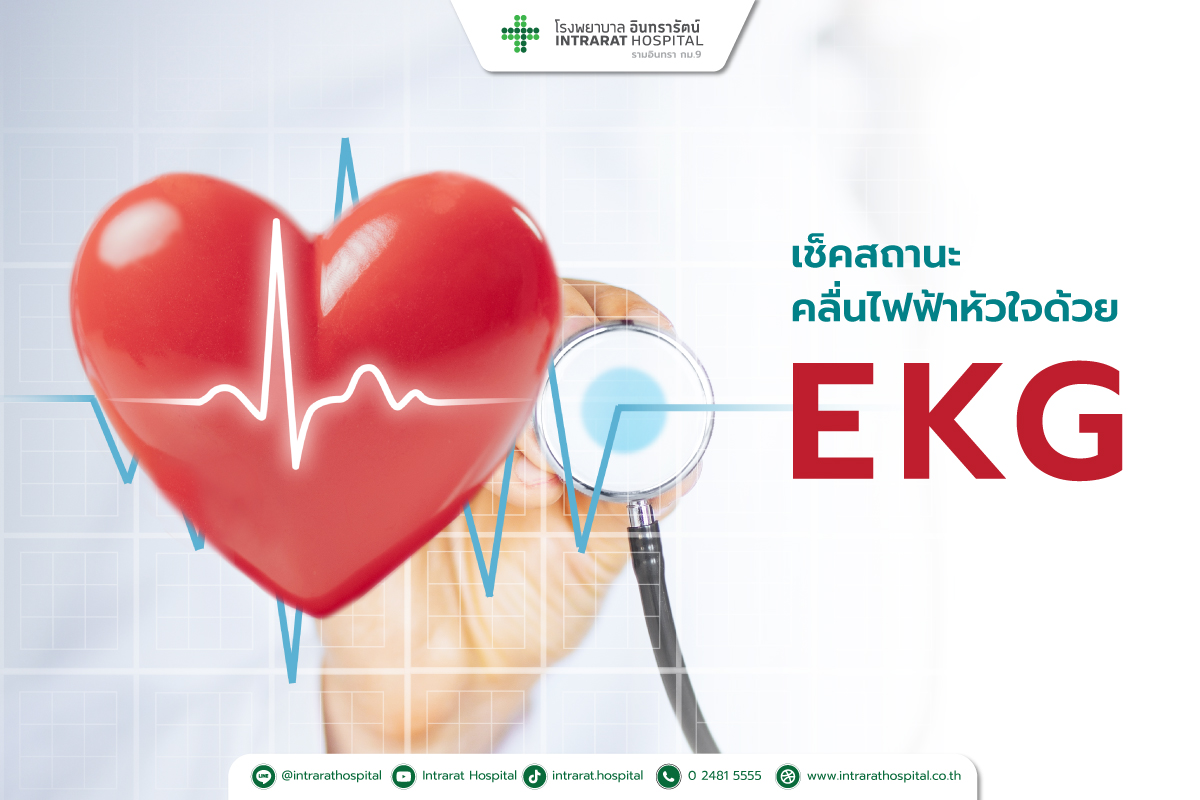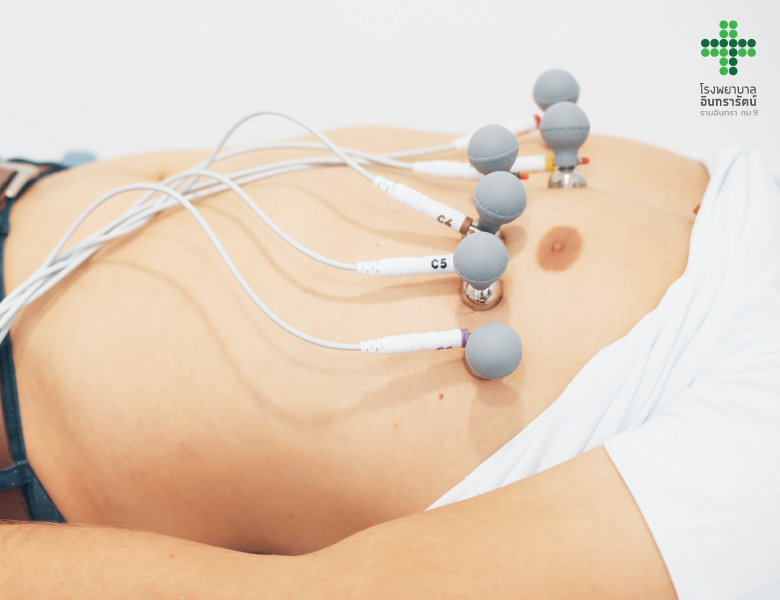
Electrocardiography
17/09/2567 16:03:58 | Views: 6,065
What is an EKG?
It is a test to detect the electrical signals of the heart that are released in each beat or the rhythm of contraction and relaxation to find abnormalities for diagnosis of various diseases such as arrhythmia, risk of heart failure, high blood pressure or to find other causes of chest pain, including checking the heart condition of patients who are taking drugs that affect the heart. An EKG is often the first test to be chosen when a patient has a history or symptoms that are suspicious of being a heart disease. The test results will be like a starting point for considering other tests as appropriate.
Who should have an EKG?
- People aged 40 and over or have a family member with heart disease.
- People who have symptoms that are suspicious of being heart disease, such as palpitations, chest pain, easy fatigue.
- People with high blood fat, high blood pressure, high blood sugar, or diabetes.
- People who smoke or drink alcohol regularly.
- People who do not exercise much.
Steps for an EKG
The person being examined must lie on their back on the exam bed in the EKG procedure room. Then, the nurse will apply a small amount of gel to the chest, wrists and both ankles and attach the respective electrodes to the chest, both wrists and both ankles, one at a time. When the nurse turns on the EKG machine, the examinee has to lie until the procedure finished. The EKG machine will process and display an electrocardiogram, which will take 5-10 minutes.
Preparation before receiving an EKG examination
- Avoid exercising before the examination.
- Do not need to abstain from food or water.
- If you are taking medication or supplements, inform the doctor before the examination, as it may cause inaccurate results.
Interpretation and evaluation of EKG examination results
The doctor will interpret the examination results by considering the electrocardiogram graph, which can tell whether the heart rate is regular or not, whether there is an irregular heartbeat. It can also tell the relationship between the upper and lower chambers of the heart, whether it is normal or not. The examination results can also be used to diagnose other diseases and heart conditions, such as:
- Ischemic heart disease
- Enlarged or thickened heart muscle
- Arrhythmia
- Coronary artery disease
- Pericarditis
If any abnormalities of the heart are found after the examination, it will enter the process of care, prevention of spreading, and targeted treatment for a good quality of life and recovery from the symptoms or disease.
By

Article
PHONO TREATMENT
Phono Treatment or Phonophoresis is a physical therapy treatment that uses ultrasound combined with a medication gel.
- More
- 13/03/2566 15:20:25
Package
GI Endoscopy (Gastroscopy & Colonoscopy) Program
- More
- 10/02/2568 12:16:49
Buy 1 Get 1 Package
- More
- 06/02/2568 11:08:02
Copyright @ 2021. All Rights Reserved By Intrarat Hospital



